This post may contain affiliate links. Please read my disclosure and privacy policy.
Coconut flour is not the easiest to work with. That’s why I spent weeks testing these coconut flour pancakes—to ensure you’ll get delicious results on your first try.
You might be surprised by how little flour you need, or by the quantity of eggs, but this is simply the nature of working with coconut flour. As a result, these coconut flour pancakes contain more fiber and protein than traditional pancake recipes, and should keep you feeling satisfied for hours.
I’ve purposely kept this recipe on the smaller side, so you can try them out without using too many ingredients. Once you get the hang of it, you can make a larger batch, and they can be reheated in your toaster for a quick morning treat.
⭐⭐⭐⭐⭐ Featured Review
“These were so quick and easy to make, and really yummy!Thank you so much for creating a recipe with common and easy to find ingredients. This is rarely the case with other Keto recipes. These have become my go to pancakes!” -Ashley
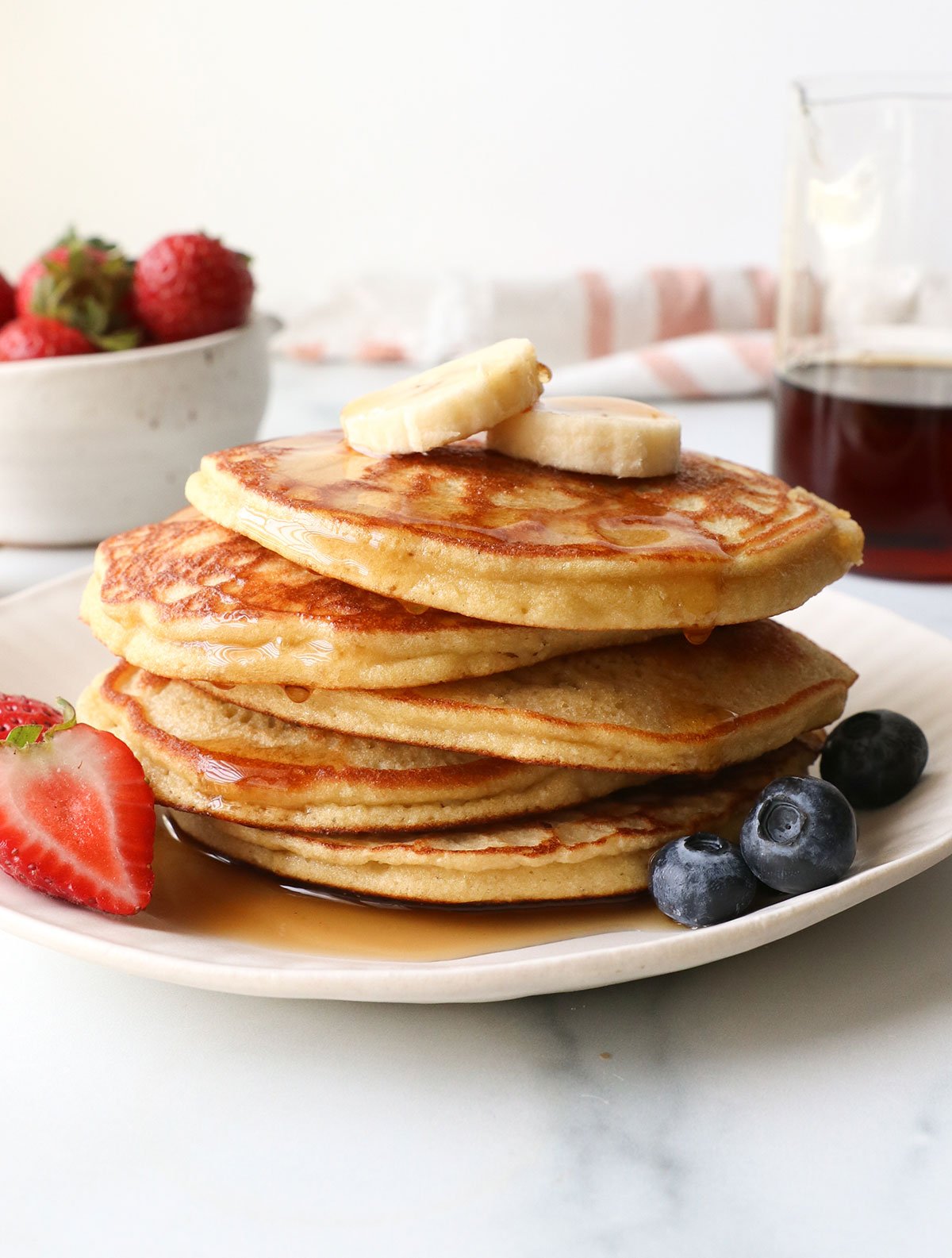
Coconut Flour Pancake Ingredients
- Coconut Flour. You may be surprised by how little flour is needed for this recipe. Be sure to use a level measurement for the best results, or use a food scale to measure by weight. Do not make substitutions when using a coconut flour recipe; another type of flour will not yield the same results.
- Eggs. Coconut flour requires more eggs than you might expect, so the listed amount isn’t a typo. I don’t recommend using an egg substitute here, since the eggs hold the pancakes together.
- Olive Oil. This recipe calls for olive oil (or avocado oil) because it won’t solidify when mixed with eggs or maple syrup, which are often cold from the fridge. Coconut oil can thicken when it comes into contact with cold ingredients, so keep this in mind if you consider making a substitution. (The batter may be difficult to stir if you use coconut oil.)
- Maple Syrup. This liquid sweetener helps with flavor and adds moisture to the batter. If you need a sugar-free recipe, sugar-free maple syrups are also available.
- Vanilla Extract. This is added for a classic pancake flavor.
- Baking Powder. This is a strong levener to help the grain-free pancakes rise. Don’t skip it, or you’ll end up with gummy, flat pancakes. (Half the amount of baking soda could be substituted, if necessary.)
- Salt. Sweet recipes require a touch of salt to balance the flavor. If you reduce the sweetness, be sure to adjust the salt accordingly.
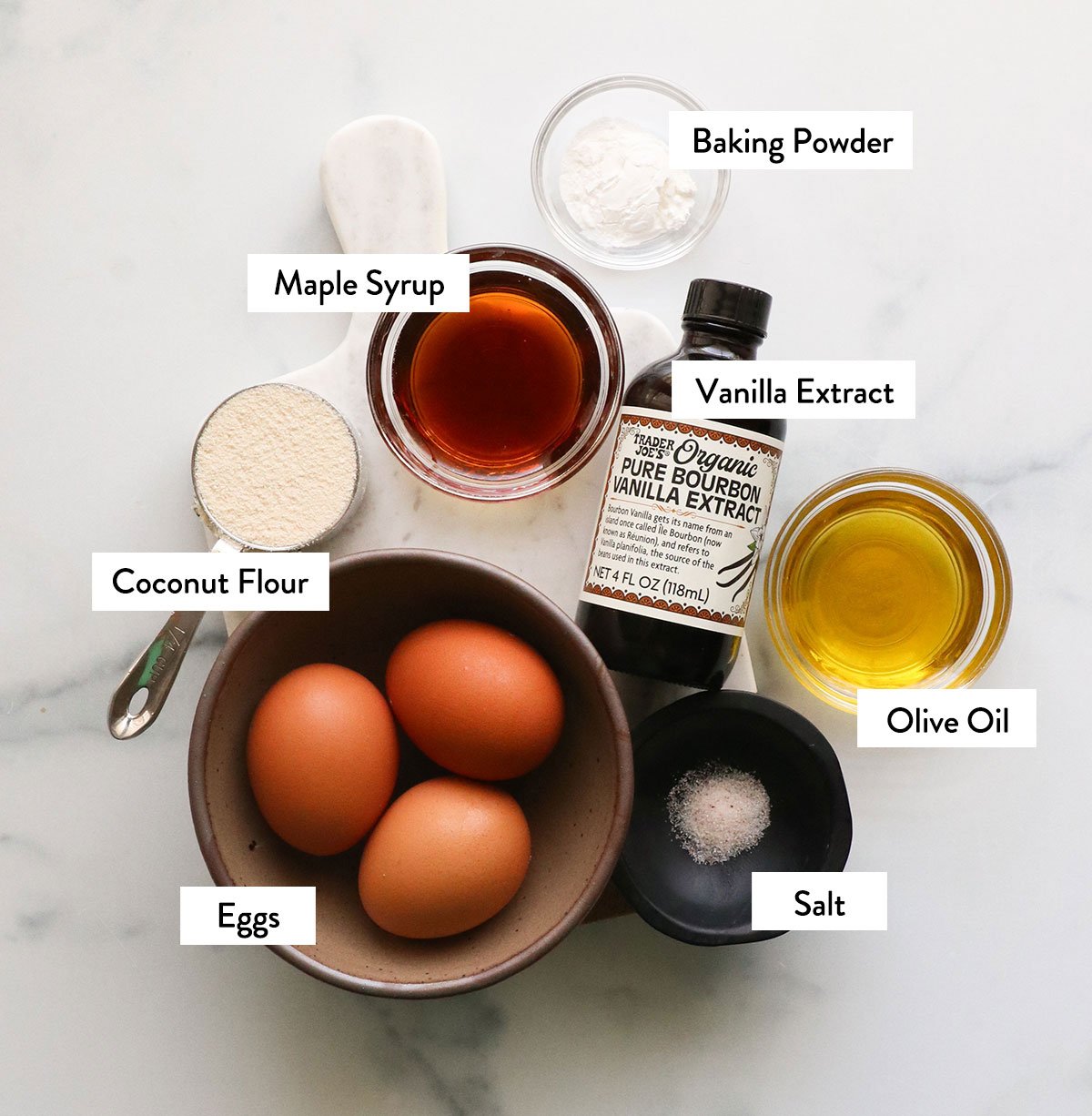
How to Make Coconut Flour Pancakes
Step 1:
Add the coconut flour to a mixing bowl (see measuring tip below), along with the eggs, maple syrup, oil, baking powder, vanilla extract, and salt.
Use a whisk to stir the batter until it looks relatively smooth, with no big lumps. The batter won’t be runny like traditional pancake batter, so don’t be surprised by the texture.
If it looks too thick, you can add 1 to 2 tablespoons of water or almond milk to help thin it out. (Don’t add too much liquid or the pancakes won’t be fluffy.)
How to Measure Coconut Flour
Coconut flour requires a precise, level measurement. I like to dip the measuring cup into the bag of flour, then use the back of a knife to level off the top, removing any excess flour on top.
(Or use the weight in grams noted in the recipe card below.)
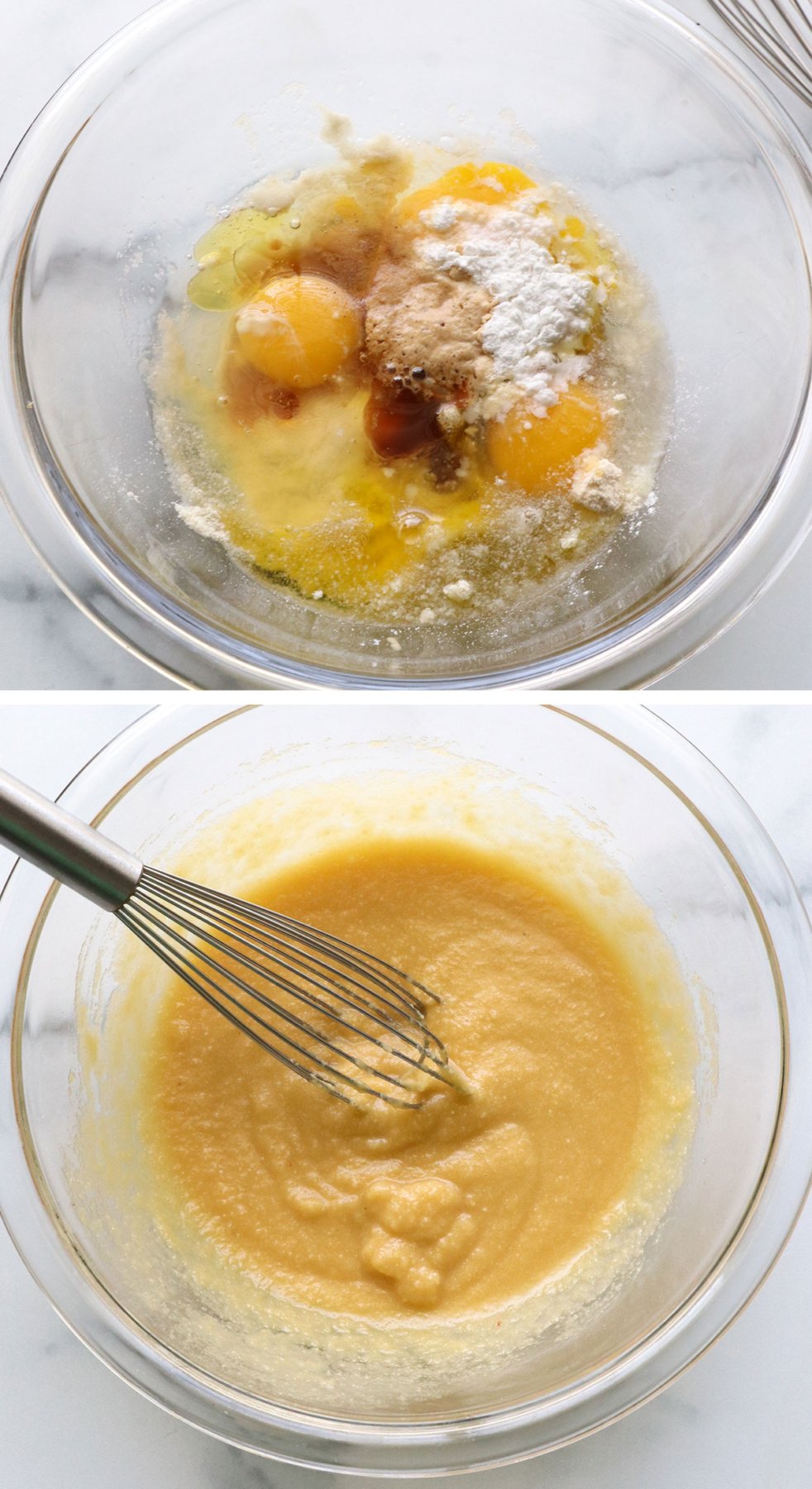
Step 2:
Heat a skillet over medium-low heat. Once a drop of water instantly sizzles when it hits the pan, you’ll know it’s ready to cook the pancakes.
Grease the skillet, then scoop 2 tablespoons of batter into the prepared pan. Use the back of a spoon to spread the batter out evenly. Let the pancake cook until bubbles start to form on top, then slide a spatula under the pancake and carefully flip it over.
Coconut flour pancakes are more fragile to flip than traditional ones, so they will most likely have to be flipped before you think they look ready. (This will prevent the first side from burning.)
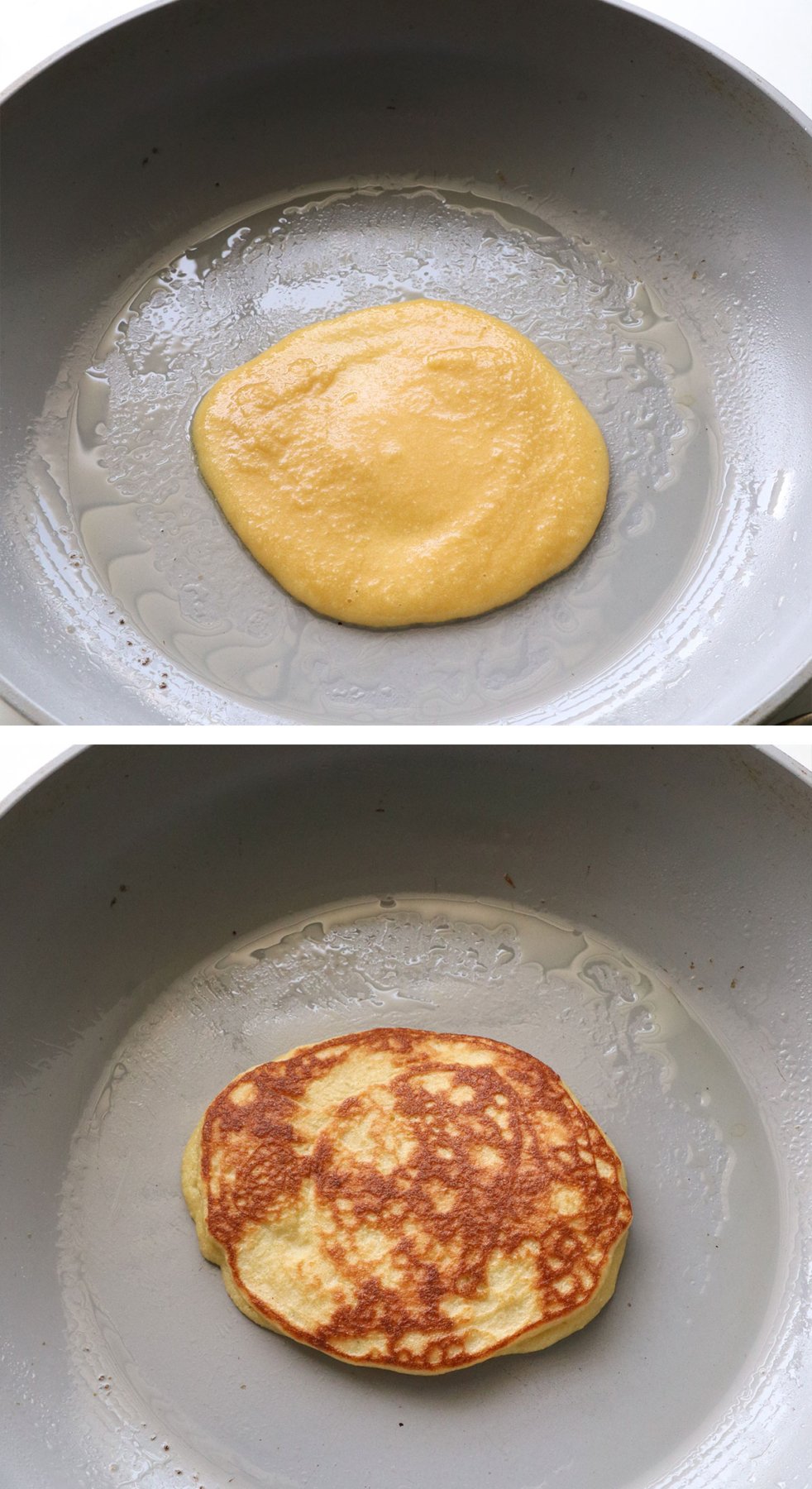
Step 3:
Repeat with the remaining batter until you have roughly 5 to 6 small pancakes. If you start with medium heat, you may need to lower it as you continue to cook the pancakes.
(Feel free to add fresh blueberries or chocolate chips into the batter for a flavored option.)
Serve them warm right away with your favorite toppings, like whipped cream or Greek yogurt. Spread them with peanut butter or your favorite nut butter for a sugar-free topping, or top with fresh blueberries, raspberries, or strawberries.
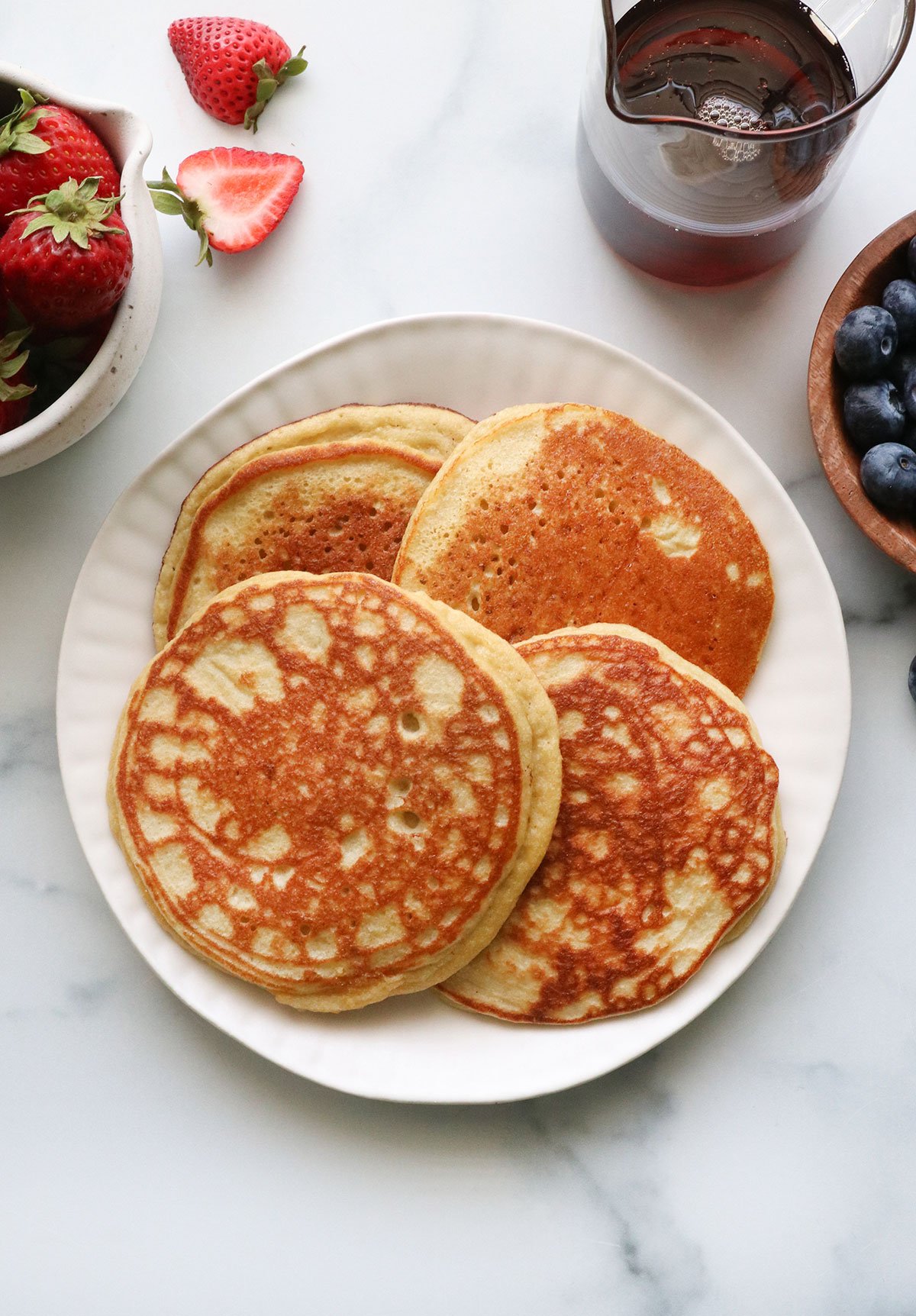
Pancake Storage Tips
Leftover pancakes can be stored in an airtight container in the fridge for up to 5 days.
Or store them in the freezer for up to 3 months. Let them thaw overnight before reheating again. (Pop them in the toaster for a quick reheat!)
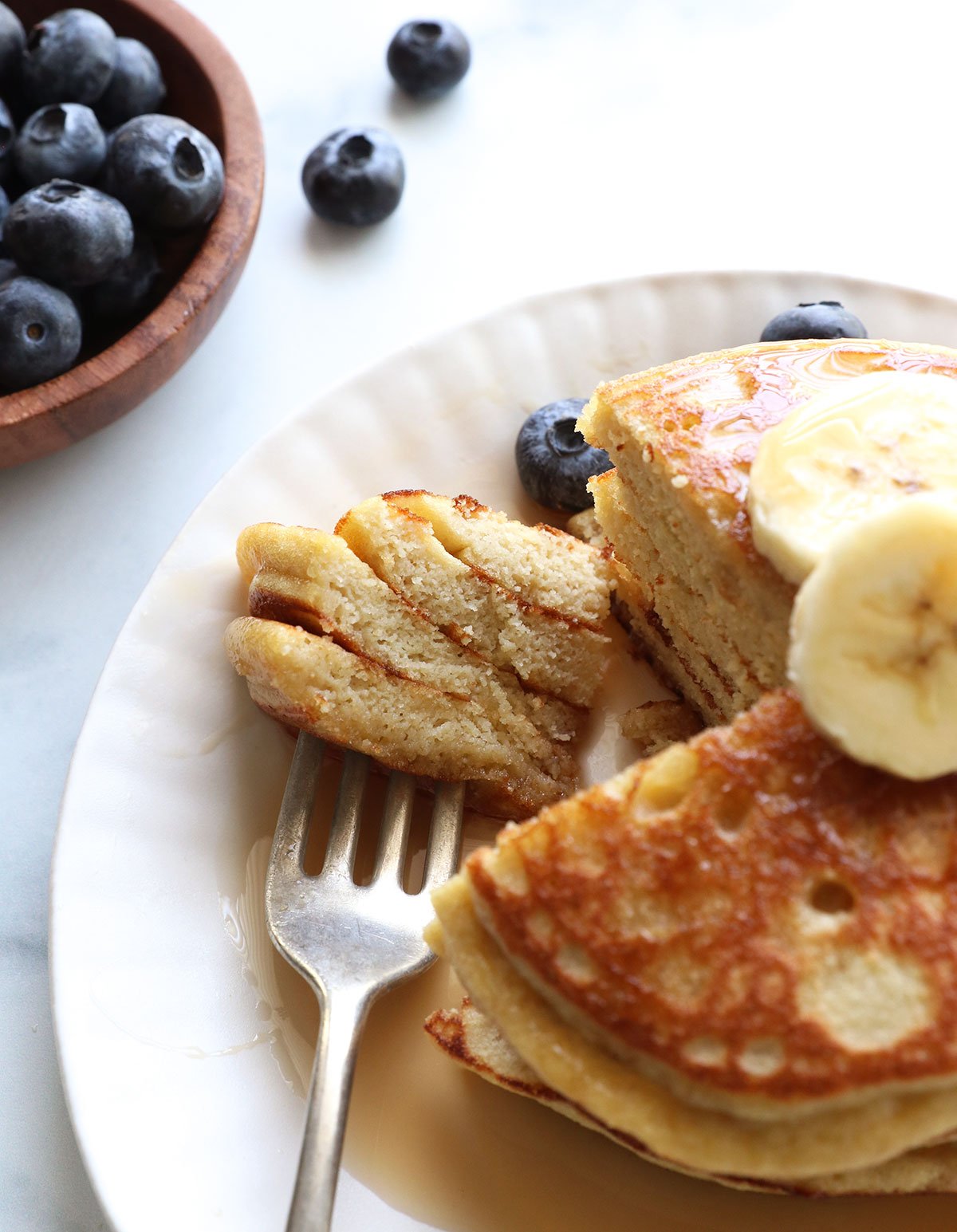
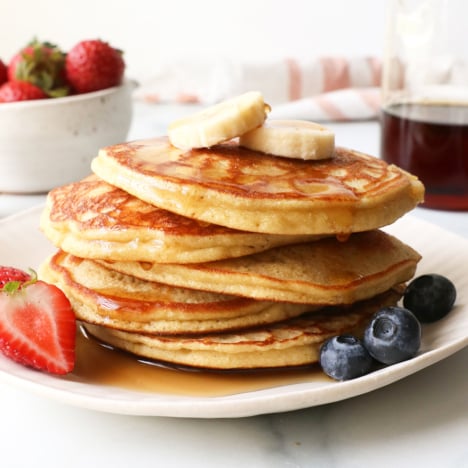
Coconut Flour Pancakes (Dairy-free + Keto-Friendly)
Ingredients
- ¼ cup coconut flour (use a level measurement)
- 3 large eggs
- 2 tablespoons olive oil
- 2 tablespoons maple syrup (or sugar-free syrup for keto)
- 1 teaspoon baking powder (see note)
- 1 teaspoon vanilla extract
- ⅛ teaspoon fine sea salt
Instructions
- In a large bowl, combine the coconut flour, eggs, oil, maple syrup, baking powder, vanilla extract, and salt. Use a whisk to stir it all together, breaking up any clumps. (If you use coconut oil as a swap, the batter will be much thicker and harder to work with.)
- In a greased skillet over medium-low heat, add 2 tablespoons of the pancake batter and allow it to cook until bubbles start to form in the middle of the pancake, about 4 minutes. Flip the pancake and let it cook on the other side, about 4 more minutes, or until both sides are golden. Don't be tempted to increase the heat to speed up the cooking time, or the outsides of the pancake might burn before the inside is cooked through and fluffy.
- Repeat with the remaining batter, making roughly 5 small pancakes (about 4 to 5 inches in diameter). Serve warm with your favorite toppings. Leftover pancakes can be stored in an airtight container in the fridge for up to 5 days.
Video
Notes
-
- I don’t recommend making substitutions for the flour or eggs in this recipe. Coconut flour doesn’t do well with egg swaps.
-
- Texture-wise you can make this pancake recipe with water instead of syrup, but readers have reported that this makes them too salty. If you want to use water, I recommend using no added salt, and prepare for these to taste more like a coconut-y biscuit than a pancake.
-
- If you’re following a grain-free diet or need to avoid corn, be sure to look for a baking powder that is made with arrowroot starch instead of cornstarch. In a pinch, you can use 3/4 teaspoon of baking soda instead, but the pancakes might not be quite as fluffy in that case.
Nutrition
More Recipes to Try
- Air Fryer French Fries
- Oatmeal Pancakes
- Chicken Vegetable Soup
- Instant Pot Steel Cut Oats
- Elderberry Syrup
- Cinnamon Tea
- Lactation Cookies
- Instant Pot Brown Rice
- Energy Balls
If you try this coconut flour pancake recipe, please leave a comment and star rating below, letting me know how you like it.
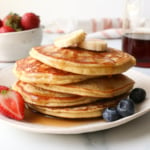
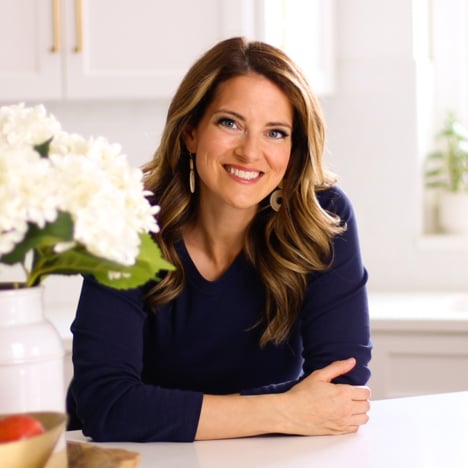
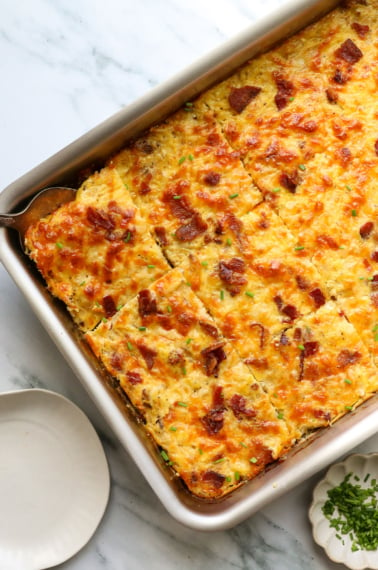

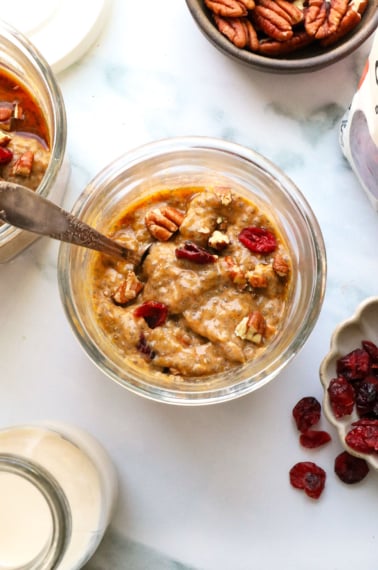







How much is a serving? Or are the macros listed for the batch?
TY!
Delicious btw 😃
I actually tried making these as muffins and it worked quite well. I added a bit of milk to make it a tad more runny, and they are lovely.
These were delicious! I was wondering whether I would ever be able to make decent pancakes with coconut flour as it is very dry, but this recipe hits the spot. Will definitely make these again tomorrow. A perfect serving for one too.
These were so yummy! I topped mine with some cinnamon, coconut sugar, and a bit of maple syrup.
Thank-you Megan. Whenever I need a recipe, I always check your website first to see if you have what I’m looking for. 💜😃